Work Packages
Overview
The Marine Stewardship Council (MSC) accredited Menai Strait East Fishery Order, accounts for around 30-40% of UK mussel production, and is entirely based on intertidal and shallow subtidal bottom culture of mussels. The success of Welsh shellfish aquaculture production has been limited to a small area of the coast in the Menai Strait where conditions are very well suited to bottom culture. While other areas around the Welsh coast and offshore are also suitable for shellfish aquaculture, there has been to date limited progress in identifying appropriate areas for expansion.
The potential for offshore mussel production was trialled during the ISPP project. MOSSS builds on the developments made in offshore mussel culture and a wider objective to assess the potential for culture of other shellfish species, locations for offshore shellfish culture and potential for expansion in other offshore areas around North Wales.
Project Aims
- The MOSSS project will develop innovative new offshore rope production systems for the collection of mussel seed, on-grow of mussels and other shellfish species.
- Identify suitable areas around the Welsh coast and offshore suitable for shellfish culture.
- Identify the potential scale at which innovative aquaculture production systems may be deployed in suitable areas.
- Assess the potential carrying capacity of a system using hydrodynamic and ecological modelling.
Develop a monitoring programme for marine non-native invasive and changes to environmental conditions.
WP1 - Project Management
WP1 is led by Bangor University to ensure the delivery of the project aims and outputs.
This will include strategic and operational management of the project, including overall direction and management, administration, finances, links to businesses, cross cutting themes, dissemination and industry/public engagement.
WP2 - Mussel Rope Seed Settlement Systems
Over the three year project this work package will establish settlement cycles of shellfish species onto the aquaculture systems and evaluate various settlement surfaces and rope types to maximize seed yield. Figure 1 illustrates the stages mussel seed from the larval stage through to settlement on a longline system. The success of various rope types will be measured using seed settlement density, growth rate, shell condition and size range. Over the course of the project three annual settlement cycles are expected to be monitored. Temporal patterns of seed settlement will be monitored and variation in settlement and post settlement growth with depth as a secondary factor will be assessed. Evaluation of the most appropriate methods for harvesting and handling of seed will be evaluated including testing of automated line strippers to coincide with optimum time for relay to the commercial mussel beds. Figure 1 illustrates the aquaculture test site, three of the lines will be used to collect seed.
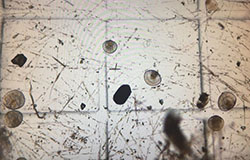
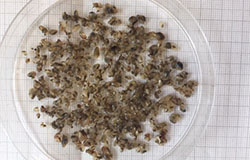
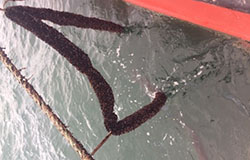
Figure 1. Mussel larvae under the microscope, and mussel seed present on the rope and stripped from the rope.
Research Outputs:
- Identification of suitable rope types for mussel seed settlement and materials for other commercial species e.g. scallops
- Collection of data on seasonal patterns of larval supply and settlement in relation to environmental factors
- Collection of data on seed yields and changes over season and depth within the aquaculture system; for mussels and other commercial species
- Evaluation of and recommendations for suitable harvesting systems most suitable for the environmental conditions
WP3 - Mussel Grow-Out Trials
The focus of this work package wills be to evaluate the longline rope system for mussel grow out compared to seed supply in WP2. Figure 2 illustrates the experimental system for use within the project. Over the course of MOSSS it is anticipated that two full production growth cycles will be completed. This work package will use experimental trials to assess the technical applications required, the economic feasibility and the success of mussel grow out over a winter season. The technical aspects of the longline system will be evaluated by comparing rope types, socked versus unsocked mussels and depth of ropes (e.g. set and forget). Factors to be evaluated will include growth rate, product losses from lines, harvest yield, meat yield, size and attachment strength. This work package will also assess the productivity between the Menai East bottom culture and rope cultured mussels to compare economic viability, mussel condition and mussel yield between two production/ culture methods. It will also assess the viability of rope settled mussels ability to grow out in intertidal bottom culture.
Research Outputs:
- Identification of the most suitable rope type for mussel grow out in an offshore longline system
- Evaluation of the potential and differences between socked versus non-socked mussels in grow out trials
- Evaluation of the harvest yields and meat yields from mussels grown on ropes compared to ones grown on intertidal beds.
- Identification of whether rope settled seed grow successfully when transferred to intertidal beds
- Identification of the most suitable harvesting systems of the rope grown mussels
- Comparison of the production of rope and bottom culture grow out of mussels to identify the most efficient way to culture mussels.

Figure 2. Plan view and cross section of the proposed offshore mussel seed system
WP4 - Developing Offshore Production of other Bivalves
The research will focus on investigating the potential for co-culture of other bivalve species, such as scallops, which have been present in previous rope trials (Figure 3). Droppers of different collecting materials e.g. lantern nets, individual ear-hanging and net sheets will be deployed onto the header line. Scallop production trials will compare the success of different collection materials by assessing survival, growth rates, product quality, quantity and occurrence of parasites and diseases.
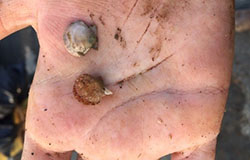
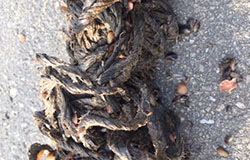
Figure 3. King and queen scallops found on previous rope assessments.
Research Outputs:
- Assessment of whether other bivalve species can be co-cultured in the aquaculture system and the success of the culture of other species by assessing growth and survival
- Comparison of the lantern net to individual hanging systems to see if one is more suitable in terms of product and technical application and feasibility
- Evaluation of the quality of the product by assessing meat yield and density on the different collectors
- Assessment of whether diseases and/or parasites are affecting the product
WP5 - Environmental Impact
The aim of this work package is to investigate and quantify potential environmental impacts, both positive and negative, of offshore longline mussel production. Protocols for the monitoring of invasive non-native species will be developed along with general biodiversity monitoring of all species settling on mussel seed ropes and potential effects on mussel seed. Impact assessment on benthic communities below the rope systems will compare habitat quality (benthic survey by camera and grab sample) at test site and control areas before and after implementation of production trials. Any observed direct interactions of wildlife with installed equipment will also be recorded.
Research Outputs:
- Establishment of robust protocols for monitoring presence of invasive non-native species on both seed settlement and mussel grow out ropes
- Identification of effects of general biodiversity on mussel seed and mussels being grown out for potential adverse or beneficial effects to the mussels
- Study the effect of the rope longline system on benthic habitats beneath the ropes and on the surrounding area
WP6 - Identification of suitable areas for Offshore Shellfish Aquaculture
The data collected in field trials from WP2-5 will be used to develop the characterisation of areas with suitable conditions for deployment of similar aquaculture systems around the Welsh coast. Initial identification of sites will be based on projections from hydrodynamic models developed by Bangor University for assessment of tidal stream and wave energy resources, to identify areas with below threshold current speeds and wave climate which would allow installation and operation of offshore rope systems. A series of maps will be produced illustrating potentially suitable areas. From the initial identification specific areas will be selected for more detailed modelling and field studies to determine feasibility for larger scale shellfish production. This will include at least the sider Conwy Bay area, which includes the experimental trial lease area, as results from the experimental trials will be directly applicable to that area. Other areas around the Welsh coast will also be included, to give coverage across Wales and where suitable to include potential for co-location with offshore energy installations. Detailed characterisation studies of selected areas will include seabed habitat, bathymetry, sediment types, fine-scale modelling of hydrodynamic conditions, ecological modelling to assess potential productivity and carrying capacity.
Research Outputs:
- Broad scale hydrodynamic model outputs identifying areas with suitable hydrodynamic conditions, bathymetry and productivity for offshore shellfish production
- Detailed characterisation of a selected subset of potential sites including hydrodynamics, bathymetry, productivity, water quality, habitats and conservation features/species.
WP7 - Dissemination
As an innovation project, effective dissemination of project outputs to the shellfish sector will be an import element of knowledge transfer. This will be achieved by several mechanisms including early-stage involvement of industry in design and implementation of the experimental trials, organisation of industry meetings and workshops to promote the results of the trials, attendance and presentation of relevant external meetings/conferences, maintenance of an effective website for presentation of on-going activities and results. An important element of dissemination will be economic analysis of offshore rope seed collection and production of shellfish, basedresults of the experimental trials, and wider projections of potential for expansion of offshore shellfish production in terms of areas, yields and economic impact.
Research Outputs:
- Industry workshops and meetings
- Conference presentations
- Research publications
- Technical reports including economic projections
